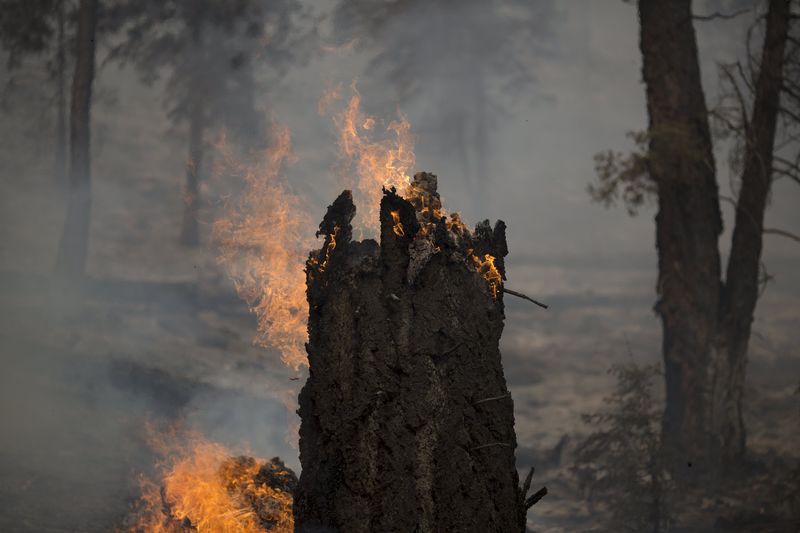(Adds details on fires in Washington state; smoke advisory in Colorado; latest wildfire statistics, spending figures)
By Eric M. Johnson
SEATTLE, Aug 21 (Reuters) - Emergency officials extended evacuation orders on Friday to additional towns threatened by a deadly array of wildfires in north-central Washington state as dozens of blazes swirled across the drought-parched Pacific Northwest and surrounding regions.
President Barack Obama signed a federal declaration of emergency for Washington state on Friday, authorizing the U.S. Department of Homeland Security and the Federal Emergency Management Agency to coordinate relief efforts in 11 counties and several Indian reservations hard hit by wildfires.
Authorities late on Thursday ordered the population of Tonasket, a riverfront hamlet of about 1,000 residents just 25 miles (40 km) south of the Canadian border, to flee their homes as flames closed in.
About 25 miles (40 km) farther south along the same river, emergency officials early on Friday issued additional evacuation orders for parts of Okanogan, a larger town at the western edge of the Colville Indian Reservation, urging evacuees in a Facebook (NASDAQ:FB) posting "not to wait for door-to-door notification."
Both communities were in the path of flames from a cluster of wildfires dubbed the Okanogan Complex, which has doubled in size since Thursday to scorch some 161,000 acres (65,154 hectares) of brush and dry timber about 115 miles (185 km) northeast of Seattle.
The Okanogan Complex includes the so-called Twisp River fire, which killed three firefighters and injured four others on Wednesday night after forcing the evacuation of some 4,000 households in the towns of Twisp and Winthrop about 30 miles (48 km) west of Okanogan in the foothills of the Cascades.
Further evacuations were ordered on Friday around Nespelem, a tiny settlement in the interior of the Colville Reservation, where homes and businesses were threatened by a separate blaze that has blackened some 88,000 acres (35,600 hectares) of tribal lands.
DESTRUCTIVE, DEADLY TALLY
At least 70 large wildfires have been raging since last week through several bone-dry Western states, the bulk of them in Washington, Oregon, Idaho, California and Montana, the National Interagency Fire Center in Boise reported.
More than 100 homes and dozens of outbuildings have been lost, but only one civilian death has been reported in the latest rash of fires - a 70-year-old woman who slipped and fell as she was securing her backyard chickens before fleeing her Idaho home last weekend.
Smoke and soot carried hundreds of miles (km) by prevailing winds from the Northwest to the Rockies settled over parts of Colorado, prompting a "wildfire smoke health advisory" that urged elderly residents, young children and people with respiratory ailments to stay indoors.
The advisory was posted on Friday for Denver and the entire the northern tier of Colorado, from the Utah line to the Kansas border.
The Western blazes, under attack by more than 30,000 firefighters and support personnel, have collectively charred more than 1 million acres (405,000 hectares) of landscape in the midst of frequent dry-lightning strikes and a heat wave gripping the region.
With manpower and other resources stretched thin, fire managers have turned to the U.S. Army, the National Guard and even personnel from Canada, Australia and New Zealand to furnish reinforcements.
So far this year, U.S. wildland blazes have claimed the lives of at least 13 firefighters, four more than died in the line of duty during all of 2014, the fire center said.
Year to date, wildfires nationwide have scorched nearly 7.3 million acres (2.9 million hectares), or 11,400 square miles (29,500 sq km), an area roughly equivalent to the combined land mass of Vermont and Delaware.
That tally, exceeding the annual 10-year average for the past decade by 2.2 million acres (890,000 hectares), has already cost the federal government more than $1 billion in fire suppression, according to the fire agency.
